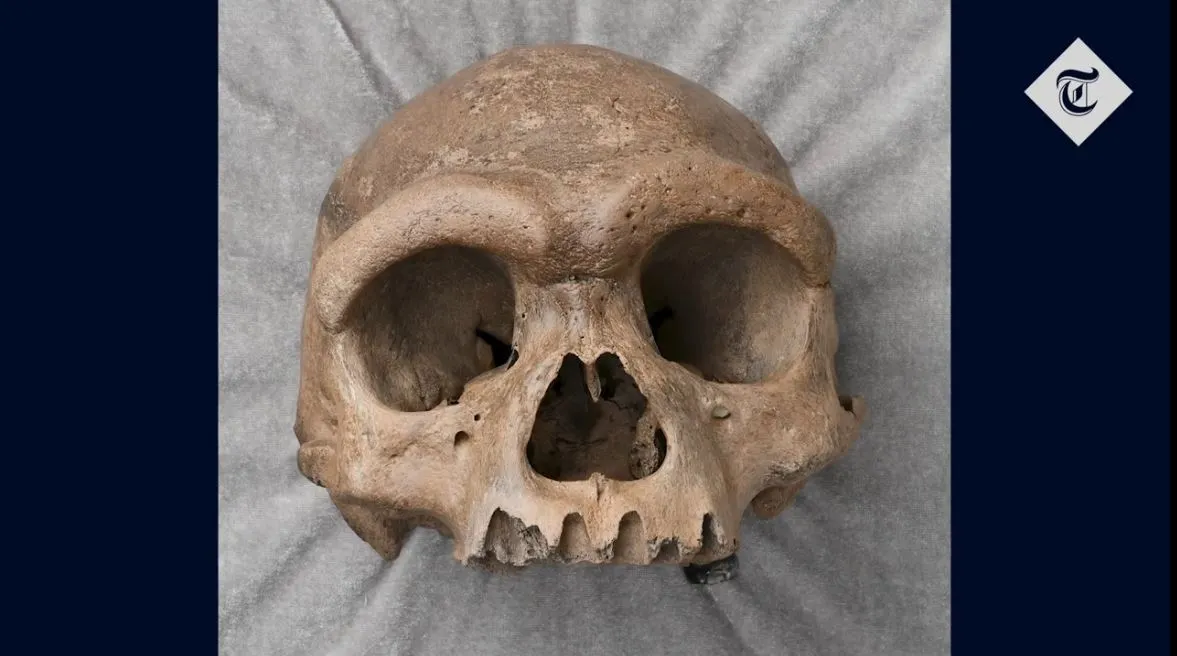An ancient skull, long hidden in the bottom of a well, could be the key to unlocking a whole new chapter of human evolution. Researchers believe they have discovered a new species, dubbed “Dragon Man”, based on a well preserved skull found in Harbin, China in 1933. The skull is believed to be a closer evolutionary relative to Homo sapiens than the Neanderthals, creating the new classification Homo longi, from the Chinese word “long”, meaning “dragon”.
🚨 Breaking news: A huge skull found in the Songhua River in China represents a new sister lineage for Homo sapiens. It dates to at least 146,000 years old and has been dubbed 'Dragon Man'.
This is a remarkable piece in the jigsaw of human evolution. https://t.co/o3SMeyE8Pm
— Natural History Museum (@NHM_London) June 25, 2021
The skull was reportedly discovered in 1933 by a Chinese laborer during the construction of a bridge on the Songhua river that runs through the northern Chinese province of Heilongjiang, which translates to Black Dragon River region (hence the “dragon man” moniker). The city was under Japanese occupation at the time, so to keep the skull from falling into Japanese hands, the laborer smuggled the skull to his home, where he buried it at the bottom of his family’s well. The skull was hidden for 80 years until the man, on his deathbed, told his grandson about the fossil in 2018.
“Dragon Man” belongs to an ancient human group that lived in East Asia at least 146,000 years ago, and features a wide face, deep square eye sockets, a prominent brow, large teeth, and most importantly, a sizable cranium, which measures 9 inches long and more than 6 inches wide, much larger than a modern human skull. The skull features a cranial capacity of approximately 48 fluid ounces, which meets the cranial capacity range of modern Homo sapiens. That brain capacity, plus the primitive features, establishes a new sister species that may be the closest branch on our evolutionary tree.
Professor Chris Stringer, research leader in human origins at The Natural History Museum in London, said “The Harbin skull is the most important fossil I’ve seen in 50 years. It shows how important East Asia and China is in telling the human story.” He continued, “What you have here is a separate branch of humanity that is not on its way to becoming Homo sapiens (our species), but represents a long-separate lineage which evolved in the region for several hundred thousand years and eventually went extinct.”
New ancient extinct human just dropped https://t.co/nks8nrNjMV
— Michael Roston (@michaelroston) June 25, 2021
Researchers believe the skull belonged to a man in his 50s, with a wide bulbous nose that would allow him to breathe large volumes of air. Based on this, they believe the man led a highly active lifestyle, and likely had a well built, muscular physique that would help him survive the region’s harsh winters.
Mark Maslin, a professor of earth system science at UCL, said “The beautifully preserved Chinese Harbin archaic human skull adds even more evidence that human evolution was not a simple evolutionary tree but a dense intertwined bush. We now know that there were as many as 10 different species of hominins at the same time as our own species emerged.”
Prof Xijun Ni, a paleoanthropologist at Hebei Geo University in China, said “We found our long-lost sister lineage.” In an interview with the BBC he added, “I said ‘oh my gosh!’. I could not believe that it was so well preserved. You can see all the details. It is a really amazing find!”
Peoples keep tweetin' at me bout this Dragon Man discovery. This is all The Cheat and I got in response. https://t.co/5XsAGonBRl pic.twitter.com/isd4HvbOhD
— Strong Bad (@StrongBadActual) June 25, 2021
(via The Guardian, image: screencap/The Telegraph)
Want more stories like this? Become a subscriber and support the site!
—The Mary Sue has a strict comment policy that forbids, but is not limited to, personal insults toward anyone, hate speech, and trolling.—










Published: Jun 27, 2021 02:38 pm